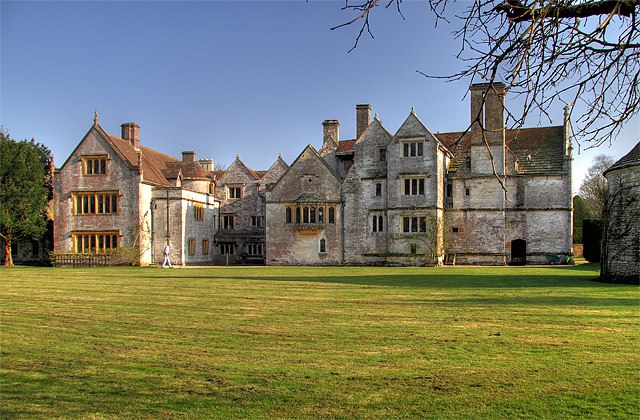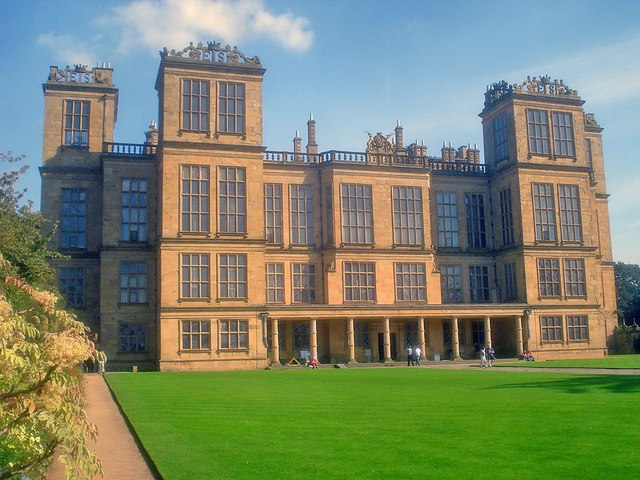Sutton Place, 3 miles (4.8 km) north-east of Guildford in Surrey, is a large Grade I listed Tudor prodigy house built c. 1525 by Sir Richard Weston, a courtier of Henry VIII.
Sutton Place photographed before 1899
Entrance courtyard
Imaginary Tudor scene in courtyard of Sutton Place depicted c. 1840 by Joseph Nash
Front doorway to Sutton Place, in shape of Tudor arch, imaginary Tudor scene by Nash, c. 1840
The Tudor architectural style is the final development of medieval architecture in England and Wales, during the Tudor period (1485–1603) and even beyond, and also the tentative introduction of Renaissance architecture to Britain. It followed the Late Gothic Perpendicular style and, gradually, it evolved into an aesthetic more consistent with trends already in motion on the continent, evidenced by other nations already having the Northern Renaissance underway Italy, and especially France already well into its revolution in art, architecture, and thought. A subtype of Tudor architecture is Elizabethan architecture, from about 1560 to 1600, which has continuity with the subsequent Jacobean architecture in the early Stuart period.
Athelhampton House - built 1493–1550, early in the period
Leeds Castle, reign of Henry VIII
Hardwick Hall, Elizabethan prodigy house
The gatehouse of Oxburgh Hall in Oxborough








